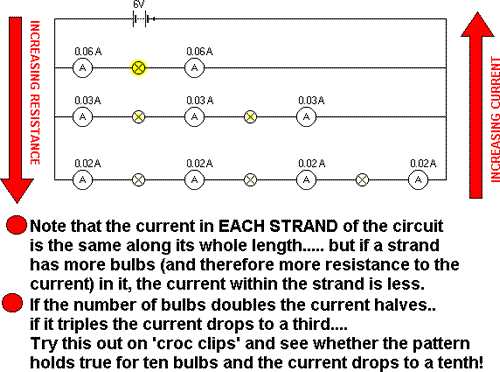Electrical resistance
To measure resistance you can use an ohm-meter but more commonly you use a voltmeter and ammeter and calculate the resistance using the relationship R = V/I Electron flow is easier if the electrons are not held tightly by the atoms that make up the material. Metals have low resistance because the outermost electrons in the metal atom's shell are freer than in non-metals. Therefore connecting wires have a negligible resistance. See this page for more detail of how resistance relates to physical properties of a conductor. The bigger the resistance, of the component, the smaller the current produced by a particular potential difference (voltage), or the bigger the potential difference (voltage) needed to produce a particular current. When dealing with series circuits you have to look at the total resistance of the strand of the circuit to find out what current will flow - as the current flow thoughout a strand is constant. Measuring InstumentsThe
p.d. across a component in a circuit is measured in volts (V) using
a voltmeter The current flowing through
a component in a circuit is measured in amperes (A) using an ammeter Potential difference, current and resistance are related as shown: Where: V = potential difference (in volts, V) I = current (in ampere, A) R = resistance (in ohm, W)
|
Follow me...
|







